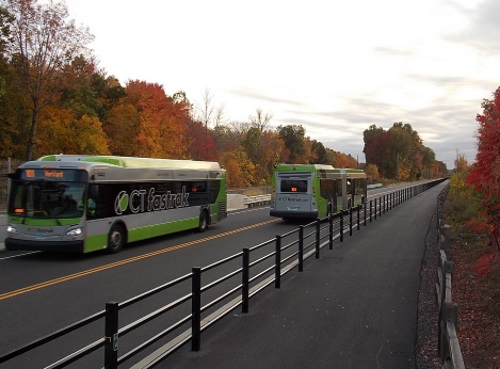The Connecticut Department of Transportation unveiled its first-ever statewide Strategic Plan for Connected and Automated Vehicles or CAVs on March 29 to help advance multimodal CAV-related services and infrastructure to address both current and evolving transportation needs.
[Above photo by CT Fastrak.]
“Over the next few decades, advancing CAV technologies has the potential to drastically change mobility and our transportation systems in Connecticut and across the country,” explained Joseph Giulietti, Connecticut DOT’s commissioner, in a statement.

“As innovation around these technologies continues to develop at a fast pace, we’re focused on ways Connecticut can benefit, especially with the potential for CAV to dramatically improve transportation safety,” he said.
The agency said some form of human error causes 95 percent of roadway crashes in the United States with roadway related fatalities topping more than 36,000 people in 2019. For Connecticut in a typical year that translates to roughly 100,000 crashes, 30,000 injuries and more than 250 deaths due to human error.
Should CAV technological capabilities continue to mature, and market penetration rates increase, there is potential for significant improvements in transportation safety, the Connecticut DOT said – allowing it and other states to better achieve their transportation safety goals and ultimately get much closer to zero deaths on the roadway.

In the near-term – from 2021-2025 – the agency said its CAV strategic plan will focus on deploying pilot projects, early policy coordination efforts, and initiatives to assess workforce and infrastructure readiness, among other activities.
In the long-term – beyond 2025 – the Connecticut DOT said it would maintain a “timely feedback loop” to adapt and engage with the pace of advancements in CAV technologies, policies, and readiness.
The agency said it would also look for opportunities to implement infrastructure programs and services at larger scale to support advances in CAV technologies, subject to its own capabilities, available funding, national standards and policies, technology readiness and market penetration.
 States
States
Washington D.C. Launches E-Bike Food Delivery Pilot
July 18, 2025 States
States

